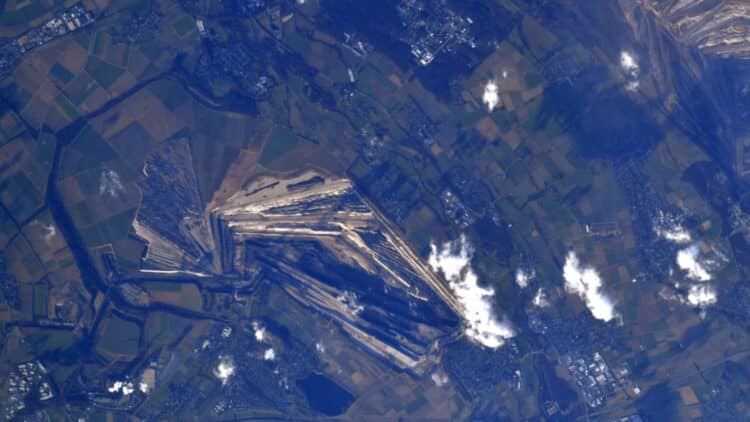The geopolitical balance may be shifting as an American mine threatens China’s dominance of the rare earth supply. In the western United States, there is an ancient mineral deposit that may be the solution to long-standing global mineral demands. America may put China on the back foot with all that lies beneath American soil. However, America has a long way to go before achieving mineral independence.
The wonderful McDermitt Caldera discovery
Back in 2023, researchers announced the discovery in the McDermitt Caldera, a dormant volcanic crater situated on the border between Nevada and Oregon. Contained in the McDermitt Caldera was 40 million metric tons of lithium, which could possibly be seen as the largest discovered lithium reserve in the world.
The discovery was so wonderful as the deposit was located in an area that had been formed over 16 million years ago, and due to volcanic activity, all that was left behind were rich minerals. The attention falling on lithium is because lithium is a key component for the batteries that power electric vehicles, smartphones, laptops, and renewable energy storage systems. With the world moving towards decarbonization efforts, the demand for lithium will drastically increase by 2035.
While China long dominated in terms of its lithium supply acquired from mining processes, America’s discovery could place the country in the lithium limelight. According to Lithium Americas, the firm behind the Thacker Pass mine located within the caldera, production will begin in 2026, with America hoping to supply lithium for more than a thousand EVs per year.
The fight towards a cleaner energy future and a secure nation
Lithium’s value is slowly becoming linked with a country’s national security. With China processing about 60% of global lithium, the country is most involved in the production of lithium batteries. Thus far, the United States has only produced a fraction of China’s lithium at its Silver Peak mine in Nevada. Thanks to the McDermitt Caldera deposit, all this could soon change.
The quality and extractability at McDermitt Caldera matter the most. McDermitt lithium seems to be contained in clay minerals (particularly hectorite), which tends to be harder to process. America will need the infrastructure that is similar to that utilized in China to mine this lithium. U.S. policymakers are all in favor of creating the right infrastructure as they wish to change America into a vertically integrated lithium industry.
Considering the challenges that may be faced at McDermitt Caldera
McDermitt Caldera is a wonderful and even remarkable discovery, but it is not without environmental hurdles. In fact, mention of extracting lithium at the location has gained public opposition. This is because the Thacker Pass site rests on land that is considered sacred by several Native American tribes. Legal battles have been ongoing since the public feels that the mine may harm cultural heritage and violate federal law.
Other concerns include habitat destruction and high emissions while extracting lithium. Lithium mining has never been seen as sustainable, and there is a call for environmental protection in this regard. Delays in terms of sourcing lithium are all due to litigation, which could leave the U.S. still dependent on imports in the near future. With countries such as Chile, Argentina, and Australia investing in speeding up lithium production, America must not fall behind in this regard. In South America, an energy-rich blue paradise has emerged as well, which shows that America is all for lithium extraction.
Could America become lithium-independent?
Yes, America has discovered an ancient lithium treasure chest that could help the U.S. become more sustainable. For America to become lithium independent, much investment and cooperation are needed with local communities getting involved and being on board in terms of releasing the potential that lies at the McDermitt Caldera. With 40,000,000 tons from 16 million years ago, America could slowly be headedtowardo lithium independence. According to satellite footage, another one of America’s largest mines has been exposed with 4,000 trillion liters of lithium sitting beneath an ordinary spot.


